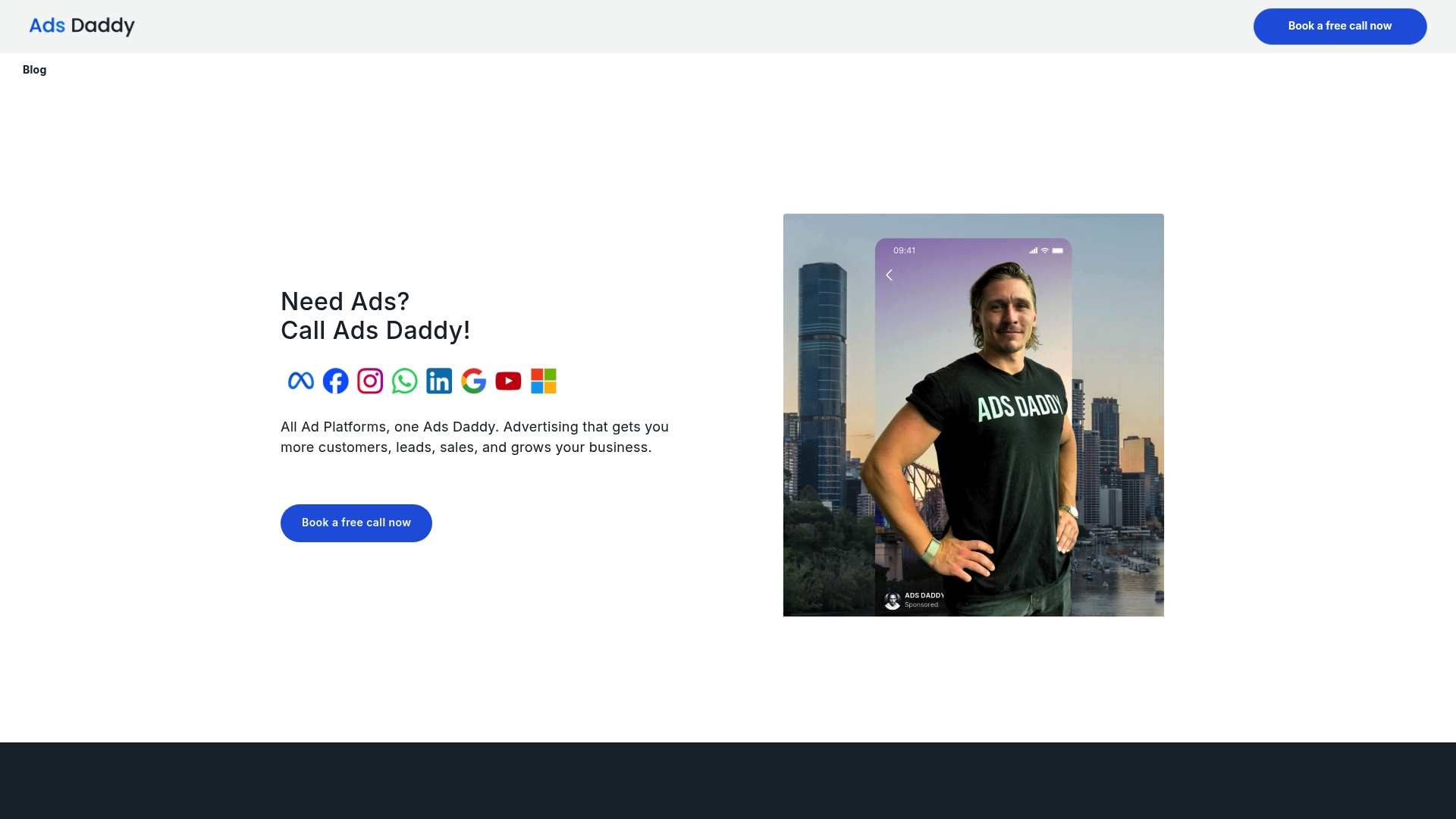Did you know that over 70 percent of digital ad campaigns underperform due to poor placement decisions? Where an ad appears makes all the difference in grabbing attention and sparking real interest. Effective ad placement shapes how people interact with a brand and can turn a simple message into a lasting impression. Knowing the keys to smart ad positioning puts businesses ahead in today’s crowded market.
Table of Contents
- Defining The Role Of Ad Placement
- Types Of Ad Placements Across Platforms
- How Placement Influences Ad Performance
- Strategic Approaches To Effective Placements
- Common Mistakes And How To Avoid Them
Key Takeaways
| Point | Details |
|---|---|
| Strategic Ad Placement | Ad placement requires a calculated approach, using audience behavior and platform dynamics to maximize engagement and conversion potential. |
| Types of Ad Placements | Utilize various digital platforms, such as social media and search engines, to enhance targeted advertising and engagement with specific audiences. |
| Influence on Performance | The effectiveness of ads is influenced by their placement, emphasizing contextual relevance, timing, and precise audience targeting. |
| Common Mistakes | Avoid pitfalls like misaligned targeting and inconsistent messaging to enhance the overall impact of advertising efforts. |
Defining the Role of Ad Placement
Ad placement is the strategic art of positioning advertisements to maximise visibility, engagement, and conversion potential across digital and traditional media channels. Ad placement isn’t just about throwing an ad somewhere and hoping for the best – it’s a calculated approach that requires deep understanding of audience behaviour, platform dynamics, and brand messaging.
According to research from the University of George Washington’s compliance guidelines, ad placement involves meticulously positioning advertisements to ensure brand consistency and targeted audience reach. This means understanding not just where your ad appears, but how it integrates with the surrounding content, user experience, and platform-specific algorithms.
Effective ad placement goes beyond simple visibility. As Australian National University’s recruitment research highlights, strategic positioning directly influences audience quality and quantity. Key considerations include:
-
Platform relevance and user demographics
-
Ad format compatibility
-
Visual and contextual alignment
-
Optimal timing and frequency
-
Performance tracking and continuous optimization
The goal? Creating a seamless advertising experience that feels natural, not intrusive. By understanding placement as a nuanced discipline, businesses can transform their advertising from background noise to meaningful audience engagement.
Types of Ad Placements Across Platforms
Digital advertising has revolutionised how businesses connect with their target audiences, offering an unprecedented array of placement strategies across multiple platforms. Each platform brings unique opportunities for precise targeting and engagement, transforming how brands communicate their message.
According to research from the Western Australian Department of Education, ad placements span a diverse landscape including print media, digital banners, social media, television, radio, and out-of-home advertising. Each channel offers distinctive advantages for reaching specific audience segments.
Research from the Australian Mobile and Digital Advertising Observatory highlights the dynamic nature of digital platforms. Modern ad placements leverage sophisticated user data to deliver hyper-personalised content across multiple channels:
- Social Media Ads: Targeted placements on Facebook, Instagram, LinkedIn
- Search Engine Advertising: Google Ads, Bing Ads
- Display Network Ads: Banner ads, remarketing campaigns
- Mobile Advertising: In-app advertisements, mobile web placements
- Video Platform Ads: YouTube, streaming service interruptions
By understanding these placement types, businesses can craft strategic ad optimization approaches that maximise visibility and engagement across different digital ecosystems.
Here’s a comparison of common ad placement types across digital platforms:
| Ad Placement Type | Key Platforms | Main Advantages |
|---|---|---|
| Social Media Ads | Facebook |
Advanced targeting High engagement |
| Search Engine Ads | Google Ads Bing Ads |
Intent-based reach Immediate results |
| Display Network Ads | Banner ads Remarketing |
Wide reach Brand awareness |
| Mobile Advertising | In-app Mobile web |
Personalised exposure On-the-go users |
| Video Platform Ads | YouTube Streaming services |
High visibility Storytelling format |
How Placement Influences Ad Performance
Ad performance is directly tied to strategic placement, transforming how businesses communicate with potential customers. Where and how an advertisement appears can dramatically impact its ability to capture attention, engage viewers, and drive conversions.
According to research from the Australian National University’s recruitment guidelines, strategic placement significantly impacts an ad’s effectiveness. The positioning determines not just visibility, but the quality and quantity of audience engagement.
Research from the Australian Mobile and Digital Advertising Observatory highlights several critical factors that influence ad performance through placement:
- Contextual Relevance: Matching ad content with surrounding platform environment
- Audience Targeting: Precision in reaching specific demographic segments
- Timing and Frequency: Optimal scheduling for maximum impact
- Visual Prominence: Position and design that captures immediate attention
- Platform Algorithm Compatibility: Understanding and leveraging platform-specific recommendation engines
By understanding these nuanced performance dynamics, businesses can craft targeted ad strategies that transform passive advertising into powerful audience connection mechanisms.

Strategic Approaches to Effective Placements
Strategic ad placement requires a nuanced approach that goes beyond simple visibility. It’s about creating a calculated connection between your message and the right audience at the precise moment they’re most receptive.
According to research from the Australian National University, successful advertising follows the AIDA principle: Attention, Interest, Desire, and Action. This framework transforms ad placement from a random activity into a structured, purposeful strategy that systematically guides potential customers through a compelling engagement journey.
Drawing insights from Western Australian Department of Education’s advertising policies, effective placement strategies demand careful consideration of several critical elements:
- Audience Alignment: Matching ad characteristics with target demographic preferences
- Contextual Relevance: Ensuring ads feel natural within their placement environment
- Psychological Triggers: Understanding and leveraging audience emotional responses
- Platform Dynamics: Adapting content to specific platform algorithms and user behaviors
- Compliance and Ethics: Maintaining brand integrity and regulatory standards
By integrating these strategic approaches, businesses can develop comprehensive ad optimization techniques that transform traditional advertising into a precise, data-driven communication mechanism.
Common Mistakes and How to Avoid Them
Ad placement mistakes can silently sabotage even the most well-intentioned marketing strategies. Understanding and proactively addressing these pitfalls is crucial for businesses seeking to maximize their advertising investments.
According to research from the Australian National University, common advertising errors often stem from excessive detail, uninspiring descriptions, and overemphasis on technical requirements. These missteps can dramatically reduce an ad’s effectiveness and audience engagement.
Research from the Western Australian Department of Education highlights several critical mistakes businesses frequently make in ad placement:
- Misaligned Targeting: Placing ads in irrelevant channels or platforms
- Lack of Specificity: Creating generic, non-specific ad content
- Neglecting Platform Nuances: Failing to adapt content to specific platform requirements
- Inconsistent Messaging: Presenting conflicting brand narratives across different placements
- Ignoring Analytics: Not tracking and adjusting placement performance
By understanding and implementing strategic ad optimization techniques, businesses can transform these potential pitfalls into opportunities for more precise, engaging advertising approaches.
Elevate Your Advertising with Expert Ad Placement Strategies
Navigating the complexities of ad placement can be overwhelming. The article highlights key challenges such as aligning your ads with the right audience, ensuring contextual relevance, and optimising timing to maximise impact. Without a clear strategy, your ads risk being lost in the noise or placed in ineffective channels. You need more than just visibility — you need precision and consistency that turn passive viewers into engaged customers.
At AdsDaddy, we specialise in overcoming these exact hurdles. Our data-driven approach embraces strategic placement across platforms like Facebook, Google, LinkedIn, and YouTube, tailored specifically to your target audience and campaign goals. Our expertise in multiple ad formats ensures your message fits naturally within each platform’s environment, increasing engagement and delivering measurable results.
Are you ready to transform your ad placement from guesswork into a powerful growth engine?

Discover how precise, targeted ad placement can boost your business now. Visit AdsDaddy to explore expert campaign management and learn more about our strategic ad optimisation and targeted ad strategies. Take control of your advertising success today.
Frequently Asked Questions
What is ad placement and why is it important?
Ad placement is the strategic positioning of advertisements to maximize visibility and engagement. It is crucial because effective placement can significantly influence audience reach, brand messaging, and overall ad performance.
How does ad placement affect conversion rates?
Ad placement directly impacts conversion rates by determining how well ads capture attention and engage viewers. Properly placed ads, aligned with user preferences and contextual relevance, can lead to higher engagement and ultimately more conversions.
What are the different types of ad placements available?
Ad placements can vary across platforms and include social media ads, search engine advertising, display network ads, mobile advertising, and video platform ads. Each type offers unique advantages for targeting specific audiences.
What common mistakes should businesses avoid in ad placement?
Businesses should avoid misaligned targeting, lack of specificity in ad content, neglecting platform nuances, inconsistent messaging, and failing to track ad performance. Addressing these mistakes can enhance advertising effectiveness.



